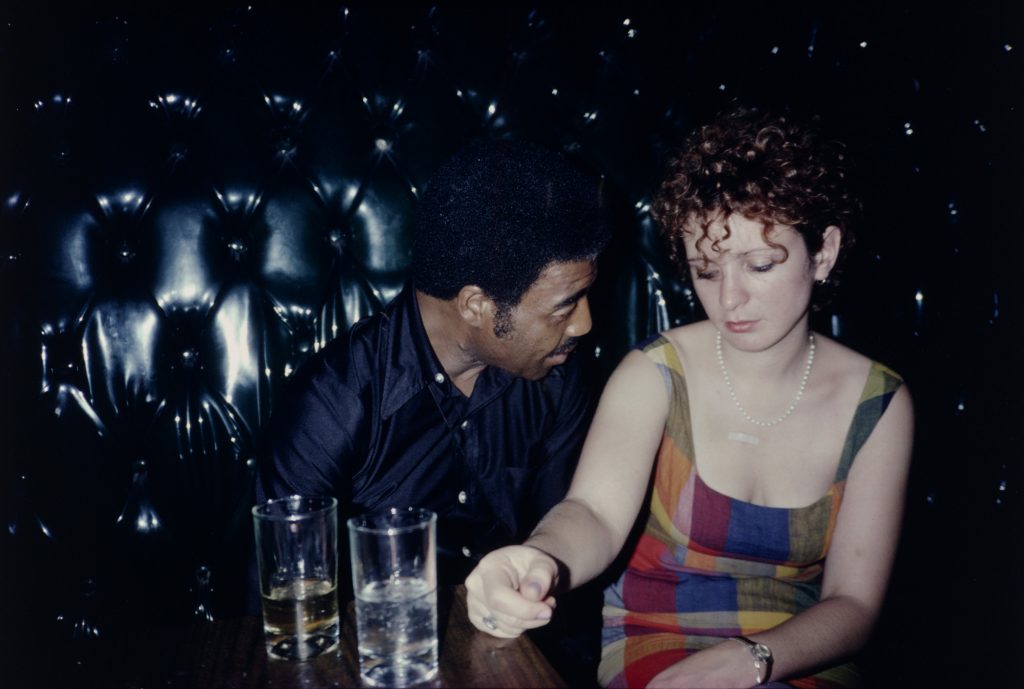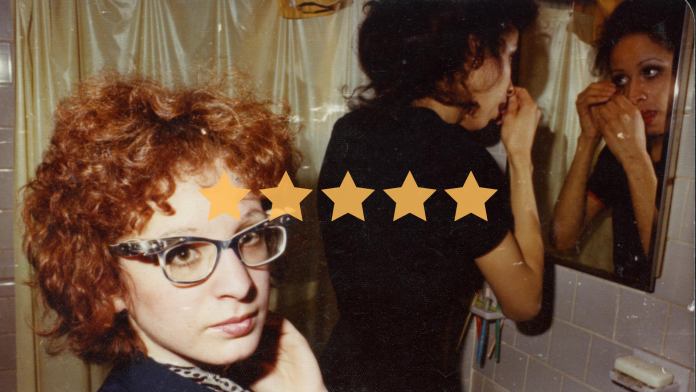A powerful new documentary from Academy Award-winning filmmaker Laura Poitras, All the Beauty and the Bloodshed explores the trauma and defiance of photographer Nan Goldin, from her childhood to the AIDS epidemic and America’s ongoing opioid crisis.
★★★★★
Early in Laura Poitras’ stunning new documentary, her subject—the influential and infamous photographer Nan Goldin—recounts her early childhood in the Boston suburb of Swampscott. She speaks candidly of the difficulties that her older sister Barbara faced, a young girl who was made to fear her sexuality in conservative 1950s America by parents seemingly inadequately equipped to look after their two young daughters.
At just 18 Barbara would go on to commit suicide, with Goldin recounting the way in which her parents reacted to the devastating news. The traumatic death of her sister, who had been institutionalised growing up, may at first seem to be the formative experience that helped shape Goldin’s career photographing those at the edges of society. But Poitras and Goldin have a larger story to tell.
Told through chapters juxtaposing Goldin’s family and career with her more recent activism, All the Beauty and the Bloodshed captures a series of interconnected snapshots of America and its march toward an opioid crisis. Goldin, herself a survivor of OxyContin addiction, is in the middle of a campaign to hold the notorious Sackler family to account for their role in the manufacture of the addictive painkillers. Through the founding of her organisation PAIN (Prescription Addiction Intervention Now), Goldin aims to draw attention to a crisis that continues to claim the lives of so many Americans. Yet Goldin is uniquely tied to the Sacklers through the family’s historic patronage of the art world.
Sackler money runs through almost every major artistic institution in the world, with galleries, wings and courtyards proudly bearing their name. In those prestigious venues, such as the Guggenheim and the Met, many of Goldin’s own works feature prominently in their collections. And therein lies her power. With Goldin leading the charge, real change seems possible. Along with her fellow PAIN members, the group is able to create a visually arresting, powerful campaign that makes headlines around the world. Yet what these survivors and activists really want to see is some accountability, and the Sacklers taken to court. She wants their name (and their money) out.

True accountability is hard to come by, but by beginning with the death of her sister, Poitras and Goldin draw out a thread that stretches across the changing health crises of 20th Century America. Having grown up in an era where mental health disorders were treated with institutionalisation, electro-convulsive therapy, and in some extreme cases lobotomy, Barbara’s suicide is put in the context of a repressed nation and its reluctance to look complex issues in the eye. Those in power look away, and their response is contagious. Goldin seems conflicted in how much she can hold her own parents responsible, fully aware that they too are partially victims of circumstance; ill-equipped for parenthood, unprepared by society.
When the USA is faced with an AIDS crisis that ravages American LGTBQ+ communities in the 1980s, those with the power to act turn a blind eye once more. It is Goldin and her contemporaries who are the documentarians of this devastating wave. For Goldin, it is a deeply personal and reflective period. She is keen to highlight friends and peers who were influential both personally and professionally—in particular the work of David Wojnarowicz. The artist, whose work was infused with a fiery political activism and his own struggles with AIDS, eventually passed away in 1992. There’s a visceral sense of anguish resulting from the fact that much of the suffering was caused as much by government inaction as it was by the virus itself. It’s a defiant portrait of a community fighting for survival.
Decades later we see Goldin, now in her 60s, going toe-to-toe with a pharmaceutical giant. The fighting spirit lives on. As the Sacklers are forced to face the testimonies of those affected by the opioid crisis, Goldin must reckon with her own parents and the trauma of their past. All the Beauty and the Bloodshed is a part of that.
The Verdict
A blending of the artist and the activist, All the Beauty and the Bloodshed weaves the major chapters of Nan Goldin’s life together into a sweeping, damning indictment of American society that speaks to wider truths about healthcare, power, politics, and personal development. Yet perhaps most importantly, it’s a lasting account. Like the flower picked at the end of A Scanner Darkly, All the Beauty and the Bloodshed offers hope in the face of overwhelming power.
Words by Jeremy Arblaster
Support the Indiependent
We’re trying to raise £200 a month to help cover our operational costs. This includes our ‘Writer of the Month’ awards, where we recognise the amazing work produced by our contributor team. If you’ve enjoyed reading our site, we’d really appreciate it if you could donate to The Indiependent. Whether you can give £1 or £10, you’d be making a huge difference to our small team.
